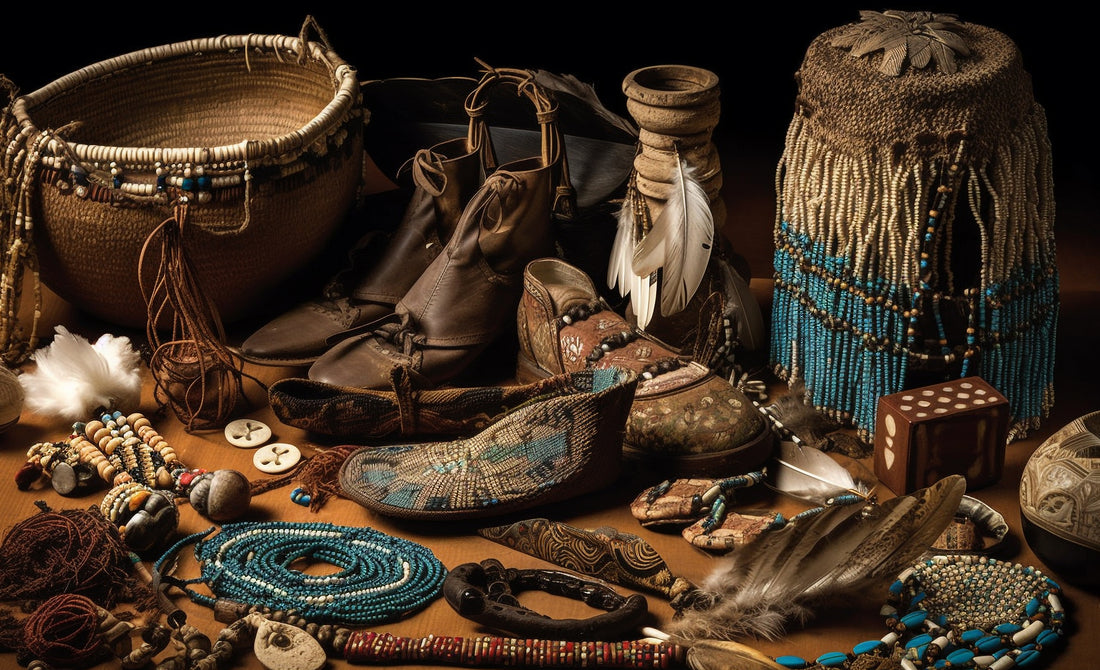
The Origins of Jewellery: Tracing the First Adornments in Human History
Share
Jewellery has long held a significant place in human history, transcending mere adornment to become a symbol of culture, identity, and power. From ancient civilizations to modern times, jewellery has evolved in design, purpose, and material, yet its roots can be traced back to some of the earliest human societies. Let’s dive into the fascinating origins of jewellery and how these early adornments shaped the world we know today.
- Prehistoric Beginnings: The Earliest Forms of Jewellery
The first known jewellery dates back over 100,000 years, long before the rise of complex civilizations. Early humans, likely in the Paleolithic era, crafted simple pieces from materials found in their environment, such as bones, shells, and stones. These early adornments were often worn as necklaces, bracelets, or headpieces, and their purpose was both practical and symbolic.
Many of these prehistoric pieces were made by threading items through holes or tying them with plant fibers. Some of the earliest examples include perforated sea shells found in Morocco, dating back over 80,000 years. These simple yet meaningful objects were used as talismans, worn for protection or as symbols of status within early human groups.
- Symbolism and Spirituality in Early Jewellery
As human societies became more organized, jewellery took on deeper meanings. Beyond personal decoration, these early pieces often carried symbolic or spiritual significance. Early civilizations believed that wearing certain materials, such as gemstones, animal teeth, or feathers, could invoke the power of gods, protect the wearer from evil spirits, or bring good fortune.
For example, many ancient cultures believed that specific stones had mystical properties. Amber, for instance, was thought to bring protection and healing, while turquoise was revered as a symbol of strength and health. As a result, jewellery became a key component in spiritual rituals and rites of passage.
- Ancient Egypt: A Golden Era for Jewellery
The ancient Egyptians were among the earliest civilizations to master the art of jewellery making, and their intricate designs are still admired today. Gold, considered the "flesh of the gods," was the material of choice for Egyptian artisans. They crafted elaborate necklaces, bracelets, earrings, and rings for both men and women, often embedding them with precious stones like lapis lazuli, turquoise, and carnelian.
Jewellery in ancient Egypt was more than decorative—it symbolized power, wealth, and connection to the divine. Pharaohs and nobility were often buried with lavish jewellery to accompany them in the afterlife. Amulets, such as the ankh (symbol of life) and the scarab beetle (symbol of transformation and protection), were commonly worn for both their aesthetic beauty and spiritual significance.
- Mesopotamia and the Rise of Metalwork
While Egypt is renowned for its goldsmithing, the people of Mesopotamia also contributed significantly to early jewellery-making techniques. Around 3,000 BCE, craftsmen in Mesopotamia (modern-day Iraq) developed advanced metalworking techniques, allowing them to create highly detailed jewellery using gold, silver, and copper.
These artisans pioneered methods like granulation (adding tiny beads of metal to jewellery), filigree (twisted metal threads), and intricate stone settings. Mesopotamian jewellery often featured floral and geometric motifs and was worn by both men and women to showcase wealth and social status.
- The Influence of Ancient Greece and Rome
Jewellery in ancient Greece and Rome continued to evolve, reflecting the cultural values of these empires. The Greeks were known for their appreciation of art and beauty, and this was evident in their jewellery designs. They used materials like gold, silver, and bronze, often incorporating delicate motifs like laurel wreaths, gods, and mythological creatures.
Roman jewellery, while similar in style, leaned more towards opulence and grandeur. Wealthy Romans flaunted their status by wearing lavish rings, brooches, and necklaces adorned with pearls, emeralds, and garnets. Roman soldiers often wore amulets for protection in battle, and rings were used as symbols of authority, particularly signet rings engraved with personal seals.
- Jewellery as Currency and Status in Ancient Civilizations
Beyond spiritual and decorative purposes, jewellery in ancient civilizations also functioned as a form of currency and wealth preservation. Gold and silver jewellery, especially in places like ancient Egypt and Rome, was used as a means of barter, trade, and inheritance. Families passed down heirloom pieces, ensuring that their wealth was preserved across generations.
Jewellery also played a pivotal role in denoting social status. In many ancient cultures, only the elite could afford lavish pieces, and wearing jewellery signaled one's rank, influence, and power. In some societies, the right to wear certain materials or designs was reserved for the ruling class, creating a visible distinction between the elite and the common people.
- The Legacy of Early Jewellery in Modern Times
The origins of jewellery in human history have had a lasting influence on the designs and practices we see today. Many modern jewellery trends and techniques can be traced back to these ancient civilizations. For instance, gold remains one of the most prized materials in jewellery, as it was for the Egyptians and Mesopotamians.
Symbolism in jewellery is also deeply rooted in history. Wedding rings, amulets, and birthstone jewellery all have ancient origins. Even today, jewellery is often worn not just for fashion, but to carry personal significance, whether for protection, love, or connection to heritage.
Jewellery’s Enduring Legacy
From the earliest shell necklaces to the ornate gold pieces of ancient Egypt and beyond, jewellery has been a universal form of expression throughout human history. These early adornments were more than just decoration—they symbolized power, spirituality, and identity. As jewellery continues to evolve in design and purpose, its deep roots in ancient human culture remain undeniable, serving as a timeless link between the past and present.
